Cameras and Sensors for Embedded Vision
WHILE ANALOG CAMERAS ARE STILL USED IN MANY VISION SYSTEMS, THIS SECTION FOCUSES ON DIGITAL IMAGE SENSORS
While analog cameras are still used in many vision systems, this section focuses on digital image sensors—usually either a CCD or CMOS sensor array that operates with visible light. However, this definition shouldn’t constrain the technology analysis, since many vision systems can also sense other types of energy (IR, sonar, etc.).
The camera housing has become the entire chassis for a vision system, leading to the emergence of “smart cameras” with all of the electronics integrated. By most definitions, a smart camera supports computer vision, since the camera is capable of extracting application-specific information. However, as both wired and wireless networks get faster and cheaper, there still may be reasons to transmit pixel data to a central location for storage or extra processing.
A classic example is cloud computing using the camera on a smartphone. The smartphone could be considered a “smart camera” as well, but sending data to a cloud-based computer may reduce the processing performance required on the mobile device, lowering cost, power, weight, etc. For a dedicated smart camera, some vendors have created chips that integrate all of the required features.
Cameras
Until recent times, many people would imagine a camera for computer vision as the outdoor security camera shown in this picture. There are countless vendors supplying these products, and many more supplying indoor cameras for industrial applications. Don’t forget about simple USB cameras for PCs. And don’t overlook the billion or so cameras embedded in the mobile phones of the world. These cameras’ speed and quality have risen dramatically—supporting 10+ mega-pixel sensors with sophisticated image processing hardware.
Consider, too, another important factor for cameras—the rapid adoption of 3D imaging using stereo optics, time-of-flight and structured light technologies. Trendsetting cell phones now even offer this technology, as do latest-generation game consoles. Look again at the picture of the outdoor camera and consider how much change is about to happen to computer vision markets as new camera technologies becomes pervasive.
Sensors
Charge-coupled device (CCD) sensors have some advantages over CMOS image sensors, mainly because the electronic shutter of CCDs traditionally offers better image quality with higher dynamic range and resolution. However, CMOS sensors now account for more 90% of the market, heavily influenced by camera phones and driven by the technology’s lower cost, better integration and speed.
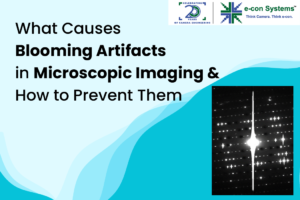
What Causes Blooming Artifacts in Microscopic Imaging and How to Prevent Them
This blog post was originally published at e-con Systems’ website. It is reprinted here with the permission of e-con Systems. Advanced camera technologies are used with microscopes for diagnostics in the medical and life sciences industry. The occurrence of different types of imaging artifacts is a major challenge faced in microscopic imaging. Blooming or saturation

North America and Europe to Account for 15 Million Video Telematics Systems In Use by 2028
For more information, visit https://www.berginsight.com/the-video-telematics-market. The integration of cameras to enable various video-based solutions in commercial vehicle environments is one of the most apparent trends in the fleet telematics sector today. Berg Insight’s definition of video telematics includes a broad range of camera-based solutions deployed in commercial vehicle fleets either as standalone applications or as
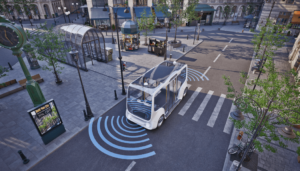
How Embedded Vision is Helping Build Smart Buses of the Future
This blog post was originally published at TechNexion’s website. It is reprinted here with the permission of TechNexion. The transportation sector has always been at the forefront of technological advancements, and the emergence of the “Smart Bus” system is a testament to this evolution. This innovative system is not just about enhancing the passenger experience

Edge AI and Vision Alliance Conversation with GenAI Nerds on Generative AI At the Edge
Kerry Shih of GenAI Nerds interviews Jeff Bier, Founder of the Edge AI and Vision Alliance, and Phil Lapsley, the Alliance’s Vice President of Business Development, about the opportunities and trends for generative AI at the edge. Shih, Bier and Lapsley discuss topics such as: Where we are in the generative AI hype cycle What
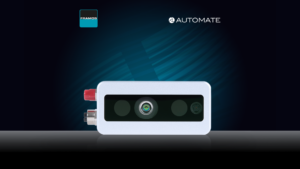
FRAMOS to Showcase Automation Solutions at the Largest Robotics and Automation Show in North America
15th of April 2024 – FRAMOS, a leading global expert in vision systems dedicated to innovation and excellence in enabling devices to see and think, is pleased to announce its presence at the Automate Show 2024 in Chicago, Illinois, USA. FRAMOS will be joining more than 800 game-changing exhibitors at the Automate Show from May

AI Chips and Chat GPT: Exploring AI and Robotics
AI chips can empower the intelligence of robotics, with future potential for smarter and more independent cars and robots. Alongside the uses of Chat GPT and chatting with robots at home, the potential for this technology to enhance working environments and reinvent socializing is promising. Cars that can judge the difference between people and signposts
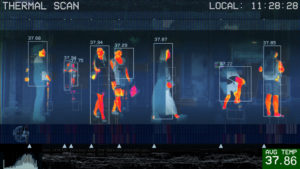
From Challenger to Leader: China Consolidates Its Presence in Thermal Imaging
This market research report was originally published at the Yole Group’s website. It is reprinted here with the permission of the Yole Group. China shifts its focus to thermal imaging technologies, securing 50% of worldwide shipments in 2023. OUTLINE The thermal camera market is expected to grow to US$9.1 billion in 2029, with an estimated
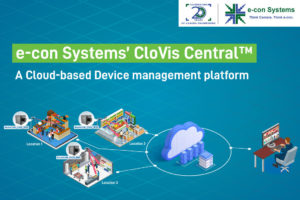
CloVis Central : A Cloud-based Device Management Platform
This blog post was originally published at e-con Systems’ website. It is reprinted here with the permission of e-con Systems. As an easy-to-use camera management platform, CloVis Central enables remote monitoring, configuration, and control of multiple cameras. In turn, this provides intelligent solutions for managing visual data across various applications. Paired with the e-con Systems’

Multi-camera 3D Scanning in Medical Applications Using Embedded Cameras
This blog post was originally published at TechNexion’s website. It is reprinted here with the permission of TechNexion. 3D scanning finds applications in multiple domains such as textile design, 3D printing, home remodeling, virtual reality, manufacturing, etc. Medical science hugely benefits from camera-enabled 3D scanning given that it is a non-invasive technique. 3D scanning is
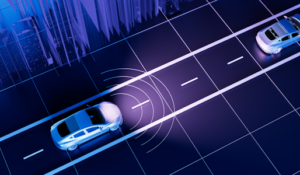
Unlocking Tomorrow’s Vision: Exploring Lidar Technology Trends in 2024
As autonomous driving continues to revolutionize the automotive industry, sensor technologies have undergone unprecedented advancements. One innovation standing out is Light Detection and Ranging (Lidar). Utilizing laser light to measure distances and create precise 3D maps of surroundings, Lidar has emerged as a game-changer in perception capabilities, especially for the automotive industry. With roots tracing

